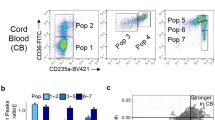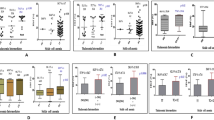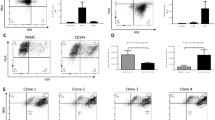Abstract
ABSTRACT: Patients who achieved bone marrow engraftment of cord blood-derived progenitor cells provided an opportunity to examine the expression of fetal Hb by neonatal hematopoietic progenitors in a postneonatal host. Cord blood cells from histocompatible siblings were successfully transplanted in two children with the Fanconi anemia syndrome. One of the transplant donors had heterocellular hereditary persistence of fetal Hb, apparently due to γ-globin gene triplication; the other donor was hematologically normal. The Gγ/Aγratio of the patient who received his transplant from the donor with hereditary persistence of fetal Hb was markedly elevated, similar to that of the transplant donor's cord blood, and this ratio remained elevated in subsequent months. In the other child, the Gγ/Aγratio immediately after her transplant was typical of the normal newborn, and over the next several months it reverted to the adult pattern. Globin synthesis studies performed shortly after engraftment demonstrated ratios of fetal Hb/adult Hb synthesis in both patients that were typical of those of normal newborns. Over the next several months, both patients converted to the adult pattern. Fetal Hb to adult Hb switching in these patients seemed to follow a temporal sequence intrinsic to the transplanted neonatal progenitor cells, without discernible influence of postneonatal environmental factors. The program for Hb switching seems to be an inherent feature of neonatal hematopoietic progenitor cells.
Similar content being viewed by others
Log in or create a free account to read this content
Gain free access to this article, as well as selected content from this journal and more on nature.com
or
Author information
Authors and Affiliations
Rights and permissions
About this article
Cite this article
Honig, G., Vida, L., Hoganson, G. et al. Fetal Hemoglobin Expression in Transplant Recipients of Placental Blood Hematopoietic Progenitor Cells. Pediatr Res 37, 432–436 (1995). https://doi.org/10.1203/00006450-199504000-00008
Received:
Accepted:
Issue date:
DOI: https://doi.org/10.1203/00006450-199504000-00008



